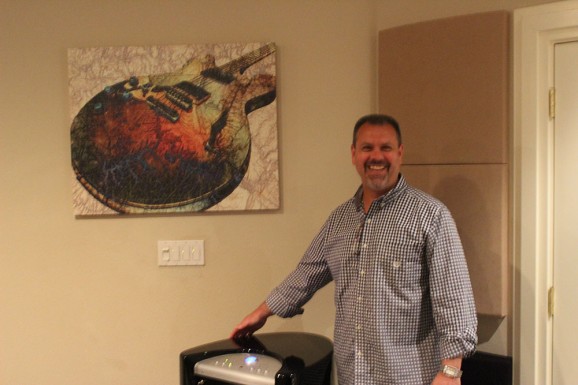 When I was given the opportunity to write a blog post I was very excited. The flood of ideas that came into my head was kind of overwhelming.
When I was given the opportunity to write a blog post I was very excited. The flood of ideas that came into my head was kind of overwhelming.
As I sit here ready to write my first entry, it’s not a matter of what to write but what is worth writing about. A good place to start is subwoofers; one or two? There are many reasons to have a subwoofer. They fill a void in our systems that give you the visceral impact while watching a big blockbuster movie. The “thud thud” of a T-Rex, the chest-pounding beat of a music soundtrack, the wall-shaking and china rattling that comes from an RPG or bomb blast on your favorite action movie. It makes that stand-up bass sound like Ray Brown or Charles Mingus intended, or the electric bass of Marcus Miller or John Paul Jones, or the thundering drums of Art Blakey or Tommy Lee. Any way you slice it, a quality subwoofer is an integral part to a music or home theater system. Here is something to think about; is there a need for two? Hmmmm?
Rooms acoustics can be problematic due to room resonance. They have nulls and acoustic problems that are created by the length of a wall, how many cubic feet the room is, what kind and how many corners there are, whether the room opens into another room, whether it’s on the first floor, if it has a concrete floor… and the list goes on and on. Bass can build up in a room, generally in corners, and make the bass sound boomy. There can be areas where there is no bass at all; these are called nulls. Good room correction software can help tame a room. Having things like Bass traps and room and wall acoustic treatments can help solve those problems, but a second subwoofer can help even out those problems in a room better, in my opinion, than most of the other remedies.
Most of the better Pre/Pros of the last 5 years have at least two subwoofer outputs on the back panel of the units, and most have stereo subwoofer outputs. Even if the one you have does not have more than one subwoofer output, a Y-connector or running subwoofers in a daisy chain, can be made to sound as good as one with a stereo or multiple subwoofer outputs. The ultimate goal is to cancel out those room resonances and using two or even more can go a long way to accomplish that. Placement is also important. Just sticking a subwoofer in a corner and calling it a day is easy, but will not give you the effect or sound that you can achieve with proper placement. Try multiple spots in a room: place them in opposing corners, or in the centers of the front and rear walls. Putting the subwoofers between the front two speakers can help blend them into the room, and also help alleviate some of those problems that your room inherently has.
On the purely aesthetic side, two subwoofers just look awesome! But that’s beside the point. Two subwoofers or even more can help tame those nulls, and help to combat room resonance. Spending the time to adjust and set the subwoofer up correctly can give you the result you were hoping for.
I hope this first entry in a hopefully long line of blog entries gave you some information to arm yourself in the battle against room resonance.
Thanks for reading,
Erich